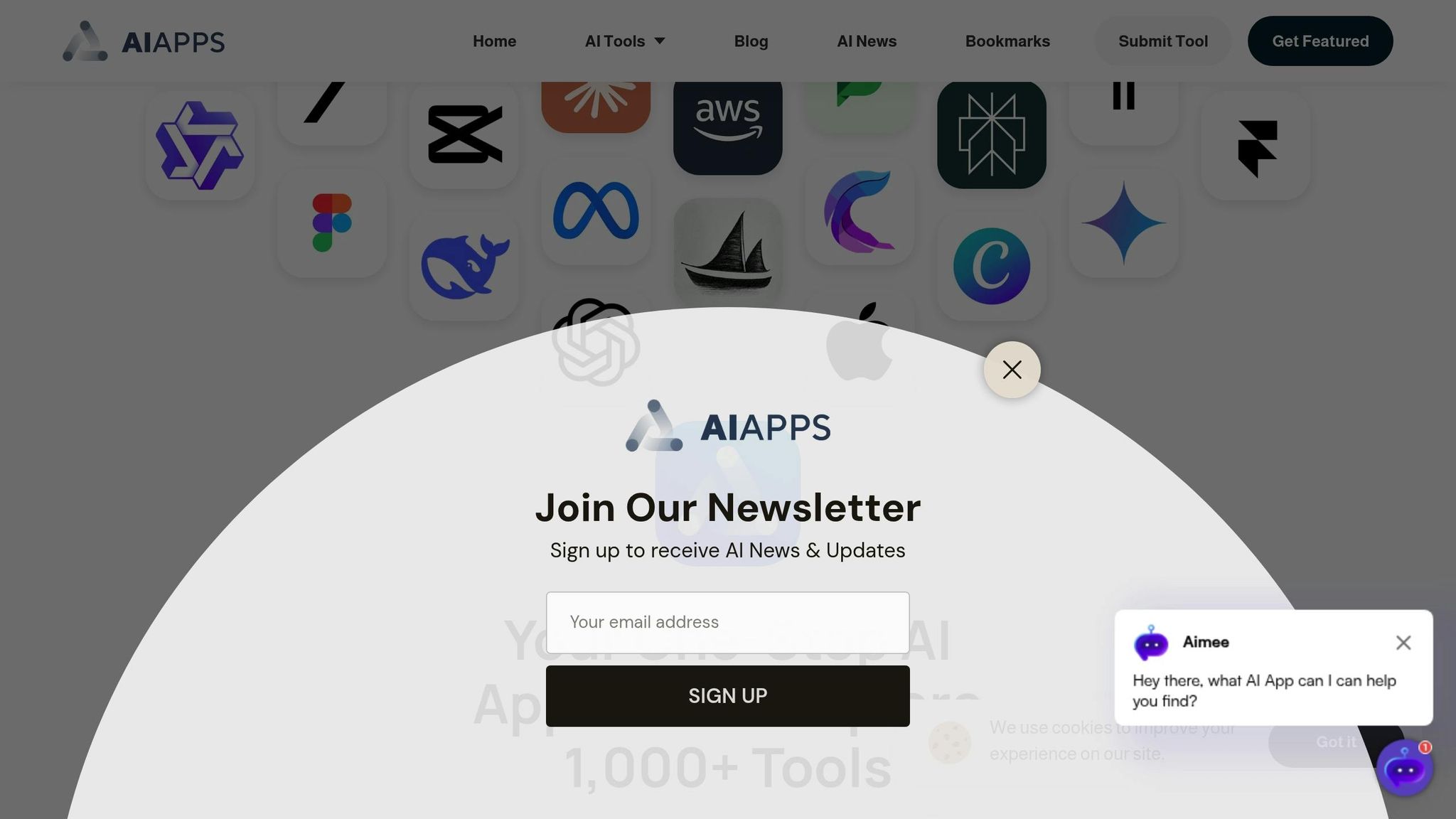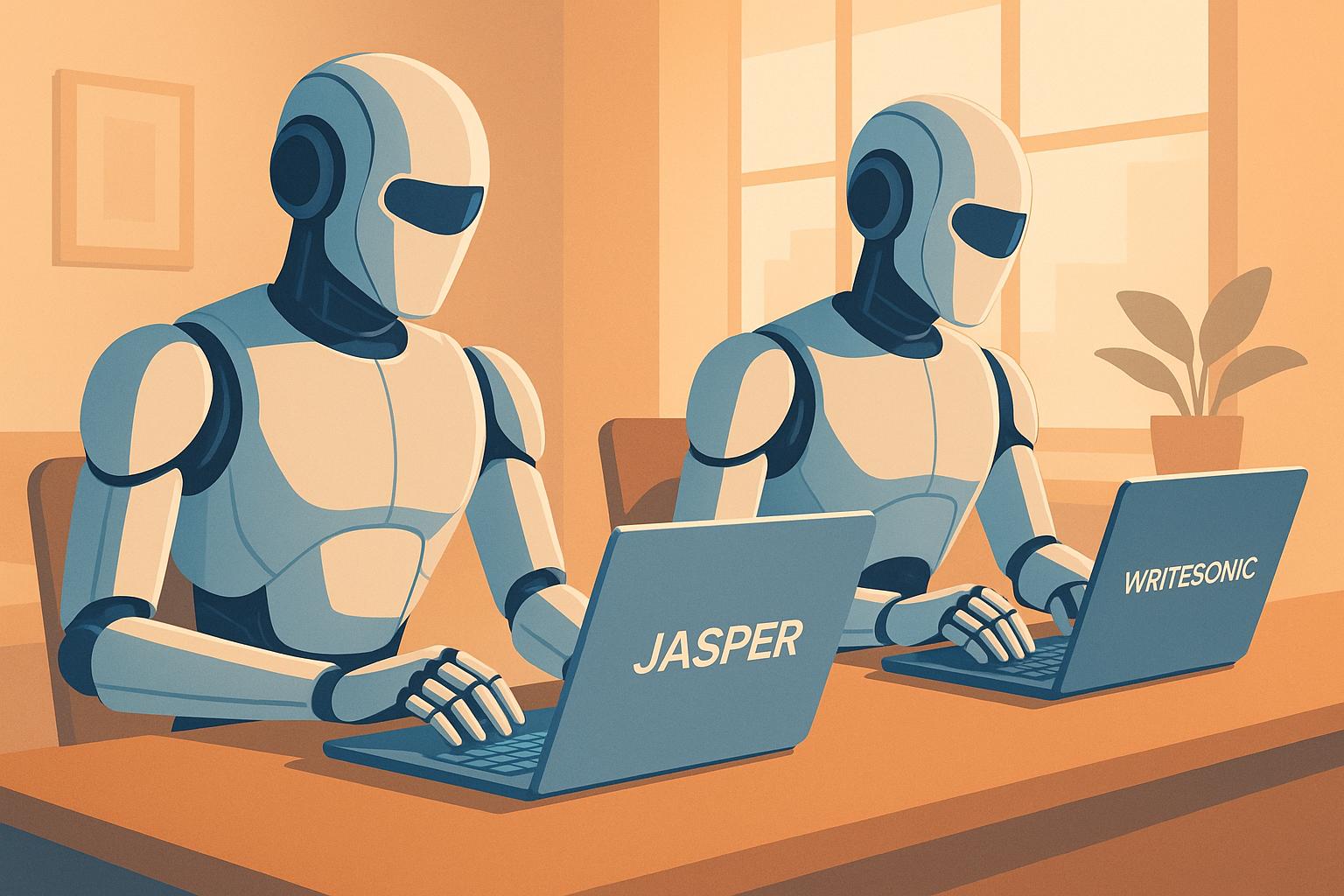Want to study smarter, not harder? AI-powered microlearning is changing how students learn in 2025. By breaking lessons into short, focused chunks and tailoring them to individual needs, these tools help students save time, retain more, and stay on track - even with packed schedules. Here's what you need to know:
- What it is: Microlearning delivers short, focused lessons instead of long study sessions.
- How AI helps: AI personalizes content, adapts difficulty, and uses techniques like spaced repetition to boost memory.
- Why it works: Fits into busy lives with quick, flexible study options - anytime, anywhere.
- Key features: Smart flashcards, adaptive quizzes, and real-time analytics to track progress.
AI microlearning tools make studying more efficient by focusing on what matters most. Whether it’s reviewing flashcards during a commute or using adaptive quizzes to prep for exams, these tools turn small moments into big learning gains.
The 8 Best AI-Powered Studying Apps (2024)
Key Features of AI Microlearning Tools
AI microlearning tools are reshaping how we approach learning, offering innovative features that make study sessions more efficient and personalized. These platforms are designed to create tailored learning experiences that align with individual needs and preferences, turning traditional study methods into smarter, more effective systems.
AI Content Creation and Personalization
One standout feature of AI microlearning tools is their ability to create customized content for each learner. By analyzing how quickly students grasp concepts and identifying their knowledge gaps, these tools craft unique learning paths. This means they focus on areas where students need the most help while reinforcing topics they already understand.
For example, AI breaks down complex subjects like calculus into bite-sized lessons, adjusting the difficulty in real time based on how well the student performs. Content isn't just tailored by topic but also by format. Visual learners might get diagrams, while others might receive step-by-step text explanations or interactive simulations. The result? Study sessions that are not only more effective but also save time.
Smart Flashcards and Quizzes
AI has also transformed traditional flashcards into smart learning tools. Using algorithms, these flashcards adapt to the learner, scheduling reviews based on spaced repetition to enhance memory retention. They focus on concepts that students find challenging, reducing time spent on material they've already mastered.
Quizzes get an upgrade too. Adaptive quizzes generate questions dynamically, adjusting their complexity and format based on the student's performance. For instance, if a student struggles with cellular respiration in biology but excels at photosynthesis, the system will prioritize more questions on the former while still revisiting the latter to prevent forgetting. Plus, these tools offer instant feedback, providing detailed explanations for wrong answers to help students understand their mistakes and improve.
Real-Time Analytics and Progress Tracking
AI microlearning tools go beyond content delivery by offering detailed performance analytics. These insights help students track their learning habits, identify strengths and weaknesses, and make smarter study decisions. For instance, analytics can show how long a student spends on certain topics, highlight recurring errors, and even suggest the best times of day for studying based on individual performance patterns.
Predictive analytics take this a step further. These systems can anticipate which concepts a student is likely to forget and schedule timely review sessions to prevent it. They can also estimate exam readiness, giving students a clear idea of where they stand and how to adjust their preparation strategies.
Interactive dashboards make all this data easy to understand. Students can visualize their progress over time, compare performance across subjects, and spot trends that might otherwise go unnoticed. It’s a hands-on way to stay motivated and focused on achieving learning goals.
How Students Can Use AI Microlearning Tools
AI microlearning tools turn everyday moments into opportunities for focused study and smarter exam prep. By tailoring content and strategies to individual needs, these tools help students stay on top of their learning and improve their exam performance.
Let’s explore some practical ways students can make the most of these tools.
Personalized Study Sessions
Imagine being able to upload your textbooks, lecture notes, or practice problems and instantly get study materials designed just for you. With AI, students can create customized practice exams, quizzes, study guides, and flashcards that highlight the most important concepts they need to master.
Quick Review Modules for Exam Prep
When it comes to exam prep, AI tools save time by simplifying the review process. They offer targeted self-testing modules that focus on areas where students need improvement. Plus, these tools can help craft personalized study schedules, making it easier to manage time effectively.
Memory Retention Techniques
Retaining information for the long haul can be tough, but AI tools make it easier. Features like flashcards and quizzes are designed to use proven methods such as active recall, metacognition, and spaced repetition. These techniques work together to strengthen memory and improve understanding over time.
sbb-itb-212c9ea
Quick Wins: Strategies for Effective AI Microlearning
Making the most of AI microlearning doesn’t require a complete overhaul of your study habits - just a few smart adjustments. These strategies can help you learn more effectively and retain information better, building on the personalized techniques you’ve already explored. Here’s how to turn the potential of AI microlearning into actionable steps you can start right away.
Set Short, Measurable Goals
The secret to successful microlearning is breaking big goals into smaller, manageable tasks. Instead of saying, "I’ll study biology today", aim for something specific, like "I’ll complete three 5-minute modules on cell division" or "I’ll review 15 flashcards on photosynthesis."
Achieving small goals creates a sense of accomplishment that keeps you motivated. For instance, completing a quick 5-minute session can give you the boost you need to tackle the next one. Start simple - 10 to 15 minutes a day is a great starting point - and gradually increase as it becomes part of your routine.
Tracking your progress can also make a big difference. Count completed modules, correct answers, or even streaks. Many learners find that setting a streak goal, like finishing at least one microlearning session every day for 30 days, helps build consistency without feeling overwhelming.
Use AI Apps for Tool Discovery

Choosing the right tools is critical for effective microlearning, and platforms like AI Apps simplify this process. With access to over 1,000 AI tools across various categories, it’s easier than ever to find exactly what you need.
The platform’s advanced filters allow you to search by specific categories, such as text generators or video tools, ensuring you can zero in on the resources that fit your goals. Plus, its multi-step verification process ensures tool quality, so you won’t waste time on unreliable options. This way, you’re always up-to-date with the latest tools that can enhance your study sessions.
Add Microlearning to Daily Routines
Integrating microlearning into your daily habits can make it feel effortless. Take advantage of short gaps in your schedule - like commutes, breaks between classes, or even while waiting in line - to fit in quick learning sessions.
For many students, morning routines are especially effective. Spend a few minutes reviewing flashcards over breakfast or listen to AI-generated audio summaries during your walk to campus. Starting the day with a quick review can help lock in key concepts.
Study breaks are another great opportunity. Instead of mindlessly scrolling through social media, use those few minutes to complete an AI-powered quiz or review material you just studied. This approach not only reinforces learning but also helps your brain consolidate information during breaks.
To make microlearning a seamless part of your life, try pairing it with existing habits. If you usually check your phone before bed, swap some of that time for a quick study session. If you have a workout routine, listen to AI-generated study content during your cardio. The goal is to make microlearning so convenient that skipping it feels harder than doing it.
Evenings can also be an ideal time for light review. Spaced repetition activities before bed help transfer information into long-term memory, making it easier to recall later. Whether it’s flashcards or a quick audio recap, these sessions can be a game-changer for retention.
AI Microlearning Tool Benefits Comparison
When it comes to AI microlearning tools, knowing the strengths and weaknesses of their features can help you pick the ones that fit your study routine best. Let’s break down some of the key features, their benefits, and their limitations to give you a clearer picture.
Smart flashcards are a standout feature. These tools adjust to your learning progress by showing tougher cards more often and spacing out the ones you’ve already mastered. This approach, based on spaced repetition, is excellent for improving long-term memory. The downside? They often rely on an internet connection to keep their algorithms updated in real time.
Automated quiz generation is another time-saving feature. These tools create practice questions directly from your study materials, allowing you to focus on learning rather than preparation. However, their functionality is often limited when you’re offline.
Real-time analytics and progress tracking give you immediate feedback on your learning habits. They highlight topics that need extra attention and identify when you’re most productive, helping you optimize your study schedule. But keep in mind, access to detailed analytics often requires a premium subscription.
Mobile accessibility is a game-changer for learning on the go. Whether you’re on a commute or taking a quick break, you can turn idle moments into productive study sessions. That said, smaller screens can make it harder to view or interact with complex content.
Here’s a quick summary of these features:
Feature Comparison Table
| Feature | Primary Benefit | Main Limitation |
|---|---|---|
| Smart Flashcards | Boosts retention with spaced repetition | Needs internet for updates |
| Automated Quizzes | Saves time on question preparation | Limited offline options |
| Real-Time Analytics | Offers insights to refine study habits | Often locked behind paid plans |
| Mobile Access | Convenient for studying anywhere | Small screens limit complex content |
| AI Content Summarization | Breaks down large texts into key points | Can overlook important nuances |
| Voice-Based Learning | Enables hands-free studying | Background noise impacts accuracy |
AI content summarization is perfect for condensing lengthy materials like textbooks or articles into manageable summaries. It’s great for quick reviews, but it might miss subtle details that could be important.
Voice-based learning is ideal for multitasking. Whether you’re commuting or exercising, you can study hands-free and make the most of your time. However, noisy environments can interfere with its accuracy.
When selecting tools, it’s essential to think about your specific needs and circumstances. For instance, if you often study in areas with unreliable internet, prioritize tools that work offline. If budget is a concern, explore free options or those with generous free tiers before considering paid features.
Ultimately, the goal is to strike a balance between what a tool offers and how practical it is for your situation. AI Apps simplifies this process by providing detailed comparisons of over 1,000 AI tools, helping you make informed decisions. This way, you can build a personalized toolkit that aligns with your learning goals and minimizes any drawbacks. Choose tools that fit your study habits and environment, making microlearning both efficient and flexible.
The Future of AI-Powered Microlearning
AI-powered microlearning is reshaping the way students approach education, offering a more efficient and personalized way to study. By 2025, these tools will play a key role in helping learners make the most of their time while achieving better results. This shift paves the way for flexible, time-conscious learning that fits seamlessly into any schedule.
The rise of bite-sized, AI-driven learning experiences reflects a broader evolution in educational technology. For students managing packed schedules and multiple responsibilities, this approach is a game-changer.
What sets AI microlearning apart is its ability to adapt to your schedule rather than forcing you to adapt to it. Whether you have just 5 minutes between classes or a 30-minute lunch break, these tools deliver meaningful learning experiences that add up over time. The secret? Consistency. Short, regular sessions often outperform marathon study sessions when it comes to retention and understanding.
Key Takeaways
- Personalized and adaptive learning improves retention. By tailoring content to individual needs, AI microlearning helps students optimize their study time and achieve better outcomes.
- Time efficiency becomes a valuable asset. Students can turn idle moments into productive study sessions, making it easier to balance academics with other commitments.
- Real-time analytics enhance study habits. AI tools provide insights into learning patterns, helping students identify their most productive times and focus on areas that need improvement for smarter, more strategic studying.
- Mobile access breaks down barriers. Being able to study anytime, anywhere removes the traditional restrictions tied to specific locations or schedules. This is especially useful for students with demanding routines or those who thrive in varied environments.
These benefits create a more responsive and effective learning system. Students who embrace AI microlearning often feel more confident about their academic progress and less overwhelmed by time management challenges.
Start Exploring AI Apps
Making the most of these benefits starts with finding the right tools. With so many options out there, narrowing down the best fit can feel overwhelming. AI Apps simplifies this process by comparing over 1,000 AI tools, helping you find solutions tailored to your specific learning needs and goals.
Begin by pinpointing your biggest challenges. Are you struggling to retain information, manage your time, or stay motivated? Once you identify your focus areas, AI Apps can guide you to tools designed to tackle those issues. The platform includes both free and paid options, so you can test different tools before deciding if premium features are worth it.
Keep in mind that the best microlearning strategies often involve using multiple tools. For example, you might rely on one app for flashcards, another for summarizing content, and a third for tracking your progress. AI Apps makes it easy to discover tools that complement each other, allowing you to build a well-rounded learning toolkit that adapts to your needs and supports effective, personalized learning through AI.
FAQs
How do AI microlearning tools cater to different learning styles and preferences?
AI microlearning tools are designed to cater to different learning styles by studying how individuals learn and what they prefer. Using this information, these tools craft customized content that aligns with each learner's needs. For instance, text-heavy materials can be transformed into audio formats for auditory learners or into visual aids for those who grasp concepts better through diagrams and imagery.
What makes these tools even more effective is their ability to create in-depth learner profiles. These profiles enable the tools to tailor lessons, provide specific feedback, and even incorporate gamified elements that resonate with a student's unique preferences. By matching the way content is delivered to how someone learns best, these systems help boost engagement, improve memory retention, and make the entire study process more productive.
How can students fit AI-powered microlearning into their busy schedules?
Students juggling tight schedules can seamlessly integrate AI-powered microlearning into their daily routines. How? By using tools that deliver short, targeted lessons during brief moments of downtime. For instance, AI-driven platforms can send quick learning prompts or quizzes directly through apps students already rely on, like messaging or calendar apps.
Dedicating just 10–15 minutes a day to microlearning apps can strengthen knowledge across different subjects without adding extra stress. Plus, AI tools that offer instant feedback and monitor progress make the process even more effective, helping students retain information while making the most of their study time.
How do AI-powered microlearning tools improve memory retention compared to traditional study methods?
AI-driven microlearning tools are transforming how we learn by breaking down complex topics into smaller, easy-to-understand pieces. This approach makes learning feel less overwhelming and helps prevent mental fatigue. These tools also use active recall, a technique known to strengthen memory, while adjusting to each learner’s pace and specific needs.
What sets these tools apart is their ability to provide personalized content and real-time feedback. This means students can zero in on the areas where they need the most help. Plus, by integrating text, visuals, and audio, these tools create a multi-sensory experience that deepens understanding and improves memory retention. Studies even suggest that microlearning can improve retention rates by 25% to 60% compared to traditional methods. When combined with AI's ability to customize the learning process, the results become even more impactful.



